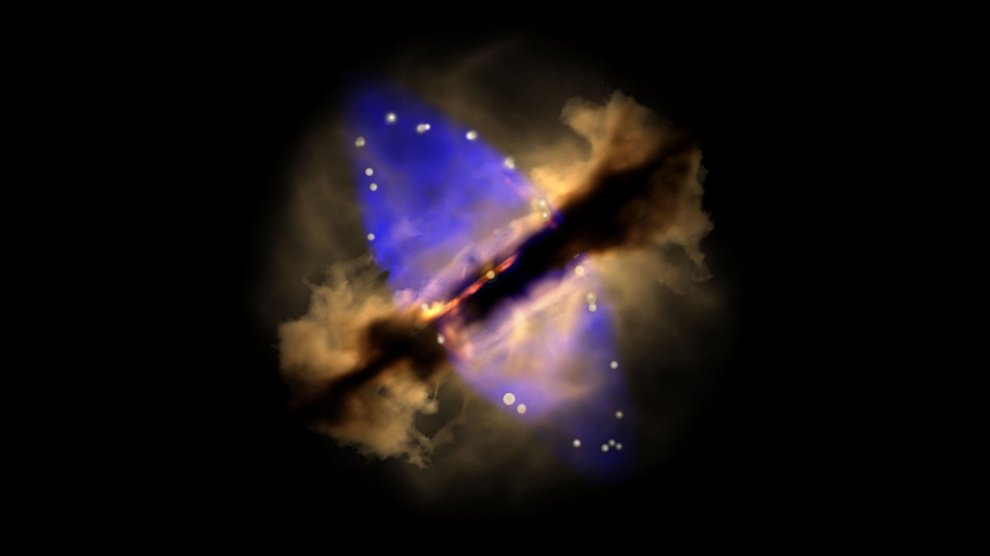Watching a Star Being Born in Real Time Actually Takes Decades
Over 18 years, astronomers have been watching protostar W75N(B)-VLA 2 for clues on how massive stars form.

In 1996, astronomers snapped a shot of W75N(B)-VLA 2, a protostar about 4,200 light years from Earth. Then, three years ago, they did the same. What they caught in the intervening 18 years was the extremely slow process of a massive star being born. Even at this young age, its already 300 times brighter than the sun.
The formation of a massive star is a chaotic and violent event. As dust coalesces in a ring around the protostar’s gravity well, it forms a barrier of sorts that funnels jets of ionic gases out the ring’s holes. Over the 18 years witnessed so far, those fiery winds have grown from a small bolus into a tremendous expanding oval that appears to be as tall as the dust ring is wide.
Astronomers captured the birthing process using the Very Large Array, a radio telescope with 27 dishes arranged in a “Y” configuration. They’ve learned plenty over the years of observing the protostar. Here’s the BBC News:
One of the major findings that has already emerged from studying W75N(B)-VLA2 relates to earlier work led by JIVE scientists, who in 2009 traced the large-scale magnetic field in that region of space and reported that the field surrounding the young star was neatly aligned with it.

Though their studies will likely last several decades more, astronomers are excited about what else W75N(B)-VLA2 has in store. Compared with stars closer in size to our sun, we don’t know much about how massive stars form. These and other snapshots should help fill in the blanks.
Image credits: Wolfgang Steffen, Instituto de Astronomía, UNAM


